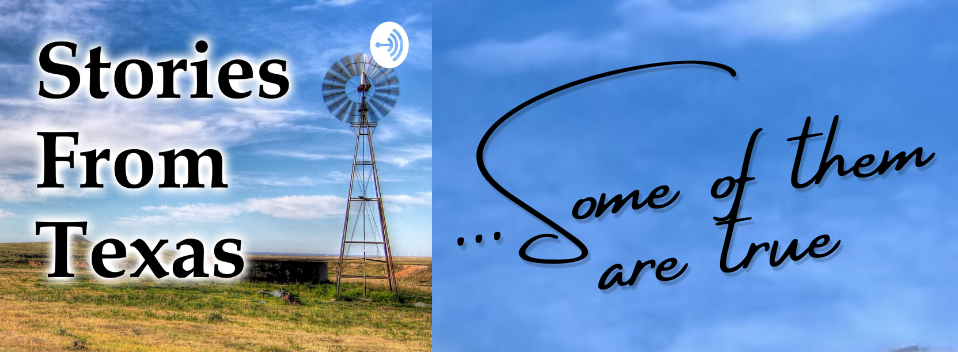
Stories From Texas
Loading...
Document Type
Article
Publication Date
3-20-2019
Abstract
One of the best books I’ve read this year is “Killers of the Flower Moon: The Osage Murders and the Birth of the FBI.” I was late to this literary party. This nonfiction work has been a super-bestseller for well over a year now. It has been on the Paperback Nonfiction bestseller list for 49 weeks. Dave Eggers writes in his New York Times Book Review that author “[David] Grann has proved himself a master of spinning delicious, many-layered mysteries that also happen to be true. … It will sear your soul.”
I won’t spoil this book for you by revealing any part of the whodunit. I’m more interested in the who pursued ‘em.
You have three levels of tension here. First, there is the Osage tribe – the richest people per capita on Earth at the time, around 1920. They were the only tribe that owned mineral rights to the worthless land they got from the federal government as their very own reservation in Oklahoma. Why not? It was worthless scrub-brush land that was mostly sandy and rocky with random clumps of grass. When oil was discovered, though, they became, collectively, unfathomably rich. J. Paul Getty, for instance, was in a bidding war Harry Sinclair for Osage oil leases. Soon after the money started piling up, the Osage started dying, mysteriously, and in large numbers.
The second level of tension is that they were being murdered, seemingly randomly. “Serial killer” was not yet a term in the crime lexicon, but as a reader, you arrive at that conclusion quickly. You feel it must be a serial killer. But not one singular method was used. Some Osage were shot, some poisoned, some blown up in their homes with dynamite. Sixty had died by the time that J. Edgar Hoover took the case for the feds. It was up to him to find the killer or killers.
Here’s the third level of tension. Hoover was just acting director of what was called the Bureau of Investigation at the time. He was only 29 years old. The case was a blessing and a curse. If Hoover could solve it he could elevate the this new agency to a formidable and powerful national police bureau. If he failed, he would be pushed out; his career hung in the balance. Hoover was wanting to create an FBI that was modern, full of smart college graduates skilled in the use of the latest scientific techniques like fingerprinting, but the last agents sent to solve the mystery either made no headway, or were themselves killed. To solve this case, Hoover needed to send to Oklahoma the kind of agent he wanted the agency to shed.
Now, at this point you might be saying, as my dear sister-in-law said to me when I told her this story, “Why are you, Mr. Texas, talking about Oklahoma?” I’ll answer you as I did her: “Hold your horses, I’m fixin’ to get there.”
Hoover had to bite the bullet and bring in the cowboys. He sent for Tom White, his bureau chief in Houston, who was an ex-Texas Ranger, to take charge of the case. As Hoover said, “He needed a man who could handle men.”
It wasn’t exactly a “one riot, one ranger” situation, but it had elements of it.
Grann describes him this way: “Tom White was an old-style lawman. He had served in the Texas Rangers near the turn of the century, and he had spent much of his life wandering on horseback across the Southwestern frontier, a Winchester rifle or a pearl-handled six-shooter in hand. He was 6 feet, 4 inches and had the sinewy arms and eerie composure of a gunslinger.
Years later, a bureau agent wrote that he was as “God-fearing as the mighty defenders of the Alamo. He was an impressive sight in his large, suede Stetson. … He commanded the utmost in respect and scared the daylights out of Easterners like me.”
Of course, it was a white Stetson he wore.
Hoover explained to White that he needed him to direct the investigation without a hint of scandal, and as quietly as possible. He told him there could be “no excuse for failure.” Hoover told him to call in as many agents as he needed, and so White called in those men that Hoover considered the cowboys (two were ex-Texas Rangers) – men who were good at “infiltrating wild country, dealing with outlawry, shadowy suspects, going days without sleep, maintaining cover under duress, and handling deadly weapons if necessary.”
So there you go. The plot is set. The characters are in place. A great Texas story awaits, even though it’s set in Oklahoma. If you don’t care to read the book just now, you can wait for the movie, which, rumor has it, will be directed by Martin Scorsese and star Leonardo DiCaprio. De Niro is said to be in talks for a role as well.
I’m W.F. Strong. These are Stories from Texas, by way of Oklahoma. Some of them are true.
Format
.MP3
Length
00:04:58
Language
English
Notes
https://www.texasstandard.org/stories/the-mystery-of-the-osage-murders/
Recommended Citation
W. F. Strong. "The Mystery Of The Osage Murders" *Stories From Texas*. Texas Standard. Podcast audio. March 20, 2019.
https://www.texasstandard.org/stories/the-mystery-of-the-osage-murders/
https://scholarworks.utrgv.edu/storiesfromtexas/86

Comments
© 2019 William F. Strong. Uploaded with permission of copyright holder.